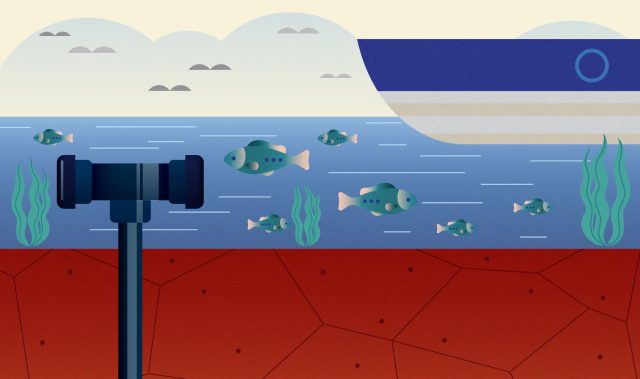
AsianScientist (Apr. 18, 2016) – Despite enormous scientific efforts in past decades, it still remains an open question to what extent the quantum motion of hydrogen nuclei can affect the hydrogen bond of water molecules. Now, researchers in China have determined the quantum component of a single hydrogen bond at a water-solid interface.
The research was led by Professor Jiang Ying and Professor Wang Enge of International Center for Quantum Materials of Peking University. Published in Science, their findings could further our understanding of the structure, dynamics, and macroscopic properties of water.
“The main difficulty of extracting the quantum component of hydrogen bond lies in that the quantum states of hydrogen nuclei are extremely sensitive to the coupling with local environments, leading to significant broadening and averaging effects when conventional spectroscopic or diffraction techniques are used,” said Jiang.
Therefore, the ability to probe water with single bond precision is crucial.
To this end, the researchers succeeded to push the limit of vibrational spectroscopy of water down to the single-bond level using a novel technique called tip-enhanced inelastic electron tunneling spectroscopy (IETS) based on a scanning tunneling microscope (STM), which combines sub-ångström spatial resolution and single-bond vibrational sensitivity.
The signal-to-noise ratios of the tip-enhanced IETS are enhanced by orders of magnitude over the conventional STM-IETS, which was pioneered by Professor Wilson Ho’s group of UC Irvine 18 years ago.
“The conventional IETS signals of water are extraordinarily weak since the frontier orbitals of water are located far away from the Fermi level. The key to defeat this limitation is gating the frontier orbitals of water towards the Fermi level with a chlorine-terminated STM tip to resonantly enhance the electron-vibration coupling,” explains Jiang.
With such a tip-enhanced IETS, the hydrogen-bonding strength can be determined with unprecedentedly high accuracy from the redshift in the O-H stretching frequency of water.
By conducting isotopic substitution experiments (replacing hydrogen atoms with heavier deuterium atoms), the researchers could extract the quantum component of the hydrogen bond, which accounts for up to 14 percent of the bond strength.
Surprisingly, the quantum contribution is much greater than the thermal energy contribution, even at room temperature. In-depth investigation combined with ab initio path integral molecular dynamics simulations reveal that the anharmonic quantum fluctuations of hydrogen nuclei weaken the weak hydrogen bonds and strengthen the strong ones.
However, this trend can be completely reversed when the hydrogen bond is strongly coupled to the polar atomic sites of the surface.
“This joint experimental and theoretical work yields a cohesive picture for the nuclear quantum effects of hydrogen bonds,” added Wang.
“Those findings may completely renovate our understanding of water and provide answers to many weirdness of water from a quantum mechanical view. It would be very interesting to further explore the quantum effects on the cooperativity of correlated H-bonds beyond the single hydrogen bond.”
The article can be found at: Guo et al. (2016) Nuclear Quantum Effects of Hydrogen Bonds Probed by Tip-Enhanced Inelastic Electron Tunneling.
———
Source: Peking University; Photo: Shutterstock.
Disclaimer: This article does not necessarily reflect the views of AsianScientist or its staff.












